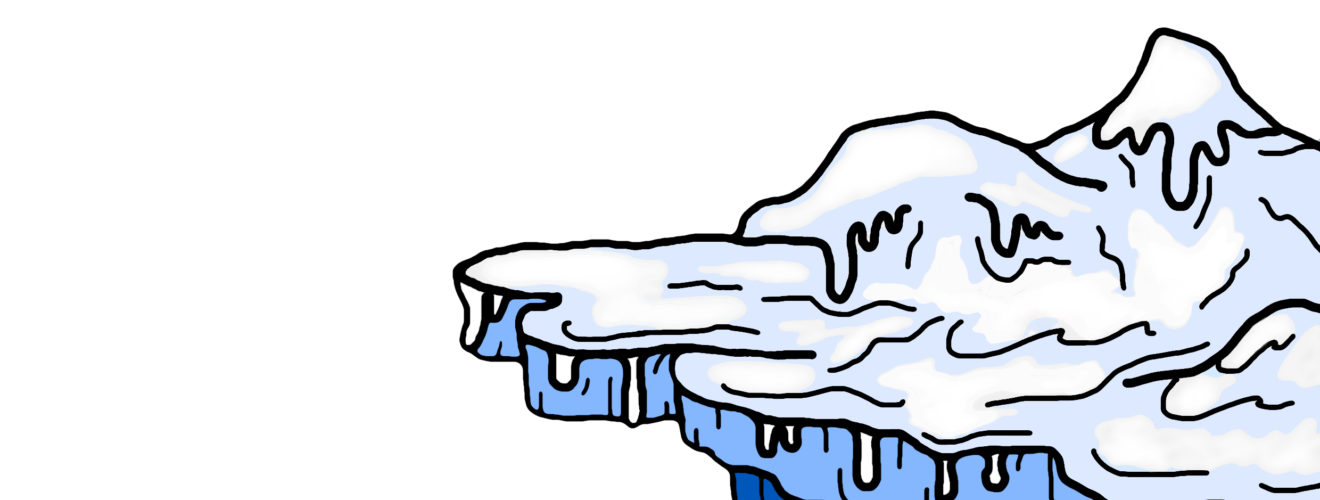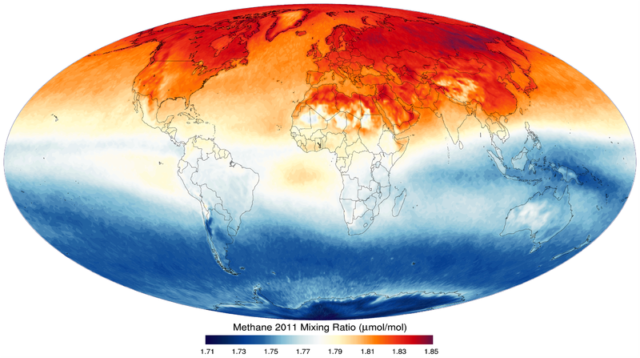The problem with arctic amplification

When the intrepid adventurers of the Apollo lunar missions looked back on the Earth from the surface of its nearest neighbour, they saw a different planet to the one now visible from those landing sites today. There are few changes to the Earth that occur on such a large scale that they would be visible from space, and even fewer so large that they could be seen from the moon. Of these, however, the tale of the Arctic is the most significant. Since the advent of reliable Arctic satellite monitoring, beginning in 1979, sea ice overlaying the surface of the Arctic Ocean has been in relentless decline. More alarming still is the finding that this decline appears to be faster than the models of the 20th century initially suggested. Many researchers now morbidly coin this phenomenon the “Arctic Death Spiral”. Arguably, the Arctic is suffering from one of the greatest environmental changes on the planet; in a process known as Arctic Amplification.
The Arctic is a mostly shallow sea surrounded by land, which experiences abundant year-round freezing of the ocean. This “cap” of ice expands in response to the lower intensity and duration of sunlight in the winter and then contracts to higher latitudes during the summer period – when the sun never dips below the horizon (a time known as peak-insolation). The ocean is, for the majority of the year, ringed by land covered in snow or perennial ice – snow that does not melt year on year, which exists in the form of ice caps and glaciers. Researchers generally agree that this seemingly permanent, though seasonally fluid, feature of the planet has been mostly stable since the time before ancient man left Africa. Much like a giant air conditioner, this massive slushy absorbs the heat energy from lower latitudes and acts as a stabiliser to the climate and weather extremes of the planet- through a physical process known as latent-heat-of-fusion1.
However, human-made effects are being felt in the Arctic that appear to herald a fundamental destabilisation of this 14 million km2 ice-box (that is comparative to the size of Russia). Furthermore, on planetary timescales these changes are happening alarmingly quickly. Analysis of Arctic sea ice volume by NASA (PIOMAS) has indicated that the unprecedented year-on-year decline in the volume of sea ice in the Arctic basin appears to be beyond the point of an easy recovery, and that this decline is certainly beyond the natural climate variability of the past 150,000 years
The point at which the sea ice volume is at its lowest (in September) has shrunk by 83% between 1979 and the present. Additionally, the ice of today is far more vulnerable to the currents which sweep it from the basin and into warmer water. Whilst carbon dioxide emissions may have been the catalyst for this decline (due to their greenhouse properties), they are not the only contributors to Arctic warming. Indeed, the Arctic appears to have kick-started its own destabilisation process.
Polar amplification is the phenomenon by which global warming (one outcome of climate change) will always be more severe at the poles, due to a convergence of physical factors. On our planet, polar amplification will always be more extreme at the Arctic than the Antarctic due to the fact that the Arctic only has a comparatively thin ice cover over the ocean, compared to its more stable, continental southern counterpart. Firstly, there is the issue of reflectance. Much like the white villas of Santorini, white reflects heat. A polar cap covered in white ice and snow reflects heat in a process referred to as albedo. However, with this diminishment of sea ice cover comes the replacement of white reflective ice with a dark ocean surface, which has a much lower albedo. Ice absorbs 10% of solar radiation, whereas ocean water absorbs 94%2.
However, polar albedo doesn’t just stop there. Warmer open ocean in the Arctic basin encourages onshore winds and the mixing of weather patterns, which blow relatively warm ocean winds onto the continents and help to melt land-bound snow, further exaggerating the effects of decreased albedo. This now snow-free permafrost begins to thaw, and, as it does, it releases stores of methane which collect over Northern land-masses and the pole.

Methane released from permafrost (and human activities) accumulates in the Arctic and causes additional warming.Via Wikimedia Commons (license: CC BY-SA 3.0; No changes made to this image)
Methane is itself a greenhouse gas with a 34-fold greater warming potential than carbon dioxide, further exacerbating these effects (cows really are a contributing factor to climate change).
Arctic Amplification also responds to changes at the lower latitudes. Increasing absorption of solar radiation by planetary greenhouse gases adds energy to the system. This increasing energy is evidenced by the increasing intensity of high-energy weather phenomena developing (hurricanes, typhoons and cyclones). This also increases the capacity of the atmosphere to carry moisture (carrying capacity) in the form of water vapour, another greenhouse gas. Ultimately, by the natural tendency of ocean circulation patterns in the northern hemisphere, this warm, moisture-laden air makes its way to the Arctic where it is absorbed and buffered (to a point). Essentially, this means that some of the additional heat generated in the northern hemisphere ends up stored in the Arctic Ocean, where it causes the “Atlantification” of the peripheral Arctic seas. This “Atlantification” is currently generating severe consequences for sea ice cover north of Scandinavia.

These processes of albedo decrease, greenhouse gas release, and energy absorption act together to drive Arctic warming much more quickly than the changes occurring at lower latitudes, and are in turn causing rapid demise of a planetary feature older and more immediately visible than humankind itself.
With our increasing understanding of the Arctic’s role in our planetary climate comes increasing responsibility for action. Fundamentally, it is the mandate of humankind to mitigate the changes in greenhouse gases that we ourselves have caused. Ultimately, this requires a shift away from the use of fossil fuels and toward renewable energy, supplemented by greater care for the environment. The Paris Agreement (UNFCCC) states that in order to avoid severe climate changes, the global temperature must be kept below +2°C and should be kept below +1.5°C above pre-industrial levels (2019 is predicted to run at ~+0.9°C). Fortunately, all 195 member-states of the international panel for climate change (IPCC) are undertaking country-specific directives to help control the issue of global warming and Arctic Amplification. China is planting a record number of trees, the UK is at the leading edge of renewable energy use, the US is investing heavily in solar power development, and India is currently leading an initiative to run the majority of its infrastructure on renewable energy – just to name a few examples. In conclusion, though the Arctic appears to be heading towards an irreparable decline, increasing awareness and action on a global scale may help to mitigate this, and may, in turn, preserve some elements of this essential global system.
This article was specialist edited by Holly Green and copy-edited by Gemma Donnelly.











Clueless
Michael, I was saddened by your comment, I havent visited here for a few years. Do you realise this is a student magazine? Nonetheless, this article was edited and written using peer reviewed sources, so perhaps your opinion of your own knowledge is dangerously inflated?
Commenting like this can only have a negative effect. It can only serve to make other people wonder “if i take the time and effort to write an article on something that interests me, will someone put me down for it?”.